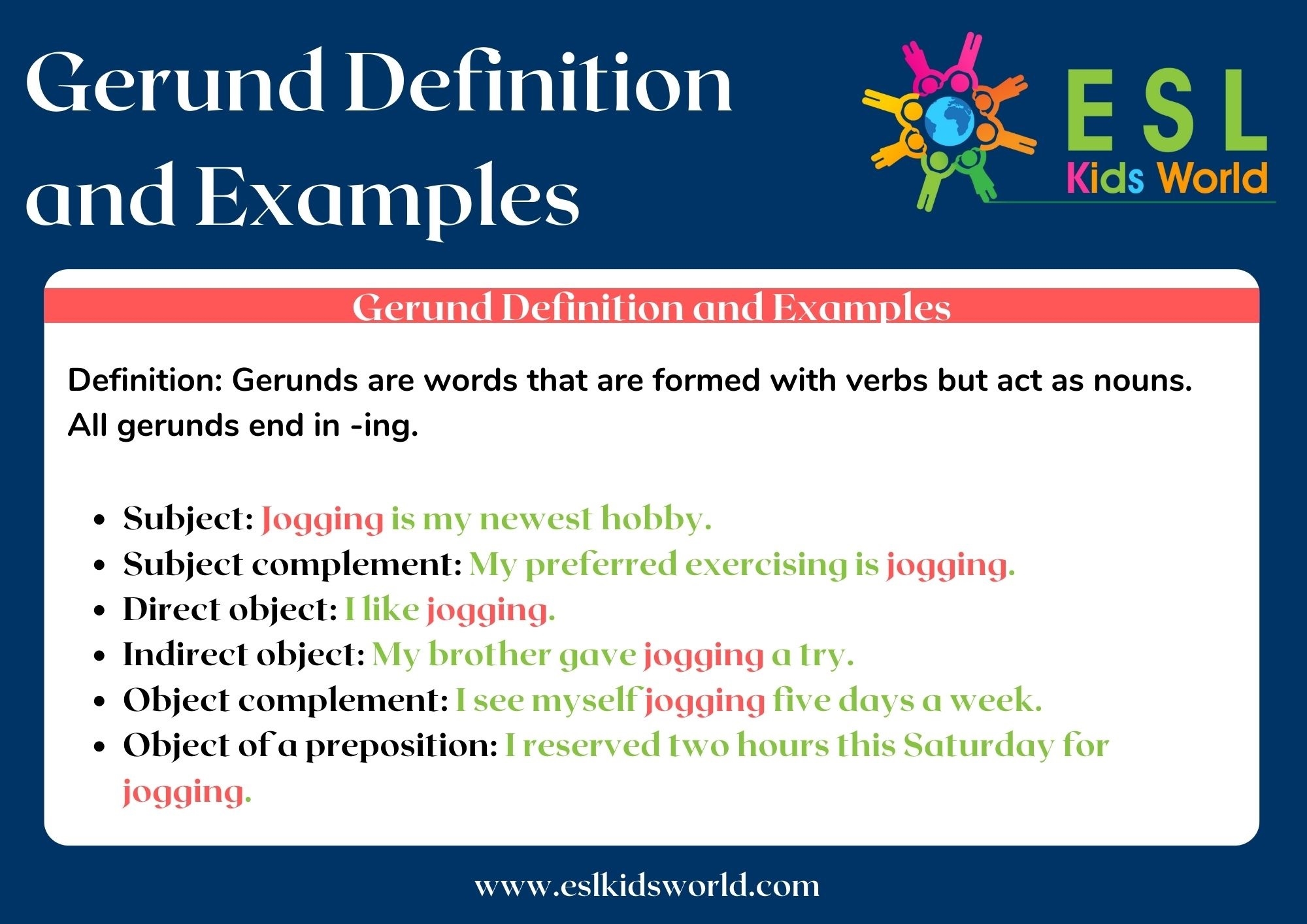Gerunds are verb forms that function as nouns in a sentence. They end in -ing and can be used in various ways to convey different meanings. Understanding how to use gerunds correctly is essential for mastering the English language. Here are some examples of gerunds in different contexts:
1. Subject of a Sentence: Running is good exercise. (Here, “running” is the subject of the sentence, functioning as a noun).
2. Object of a Verb: She enjoys dancing. (In this sentence, “dancing” is the object of the verb “enjoys”).
3. Object of a Preposition: He is interested in learning new languages. (In this example, “learning” is the object of the preposition “in”).
4. After Certain Verbs: I like swimming in the ocean. (Here, “swimming” follows the verb “like” to indicate a preference).
5. As Part of a Gerund Phrase: The teacher asked the students about completing their assignments on time. (In this sentence, “completing their assignments on time” is a gerund phrase).
Gerunds can add variety and depth to your writing. By incorporating them effectively, you can enhance the clarity and flow of your sentences. Practice using gerunds in different contexts to improve your language skills and become a more proficient communicator.
Overall, gerunds are versatile and useful components of the English language. By mastering their usage, you can convey your thoughts and ideas more effectively. Remember to pay attention to the structure of sentences and the context in which gerunds are used to ensure clear and coherent communication.
Next time you write or speak in English, try incorporating gerunds to see how they can enhance your expression. With practice and attention to detail, you can become more proficient in using gerunds and other grammatical elements to convey your message with precision and clarity.
